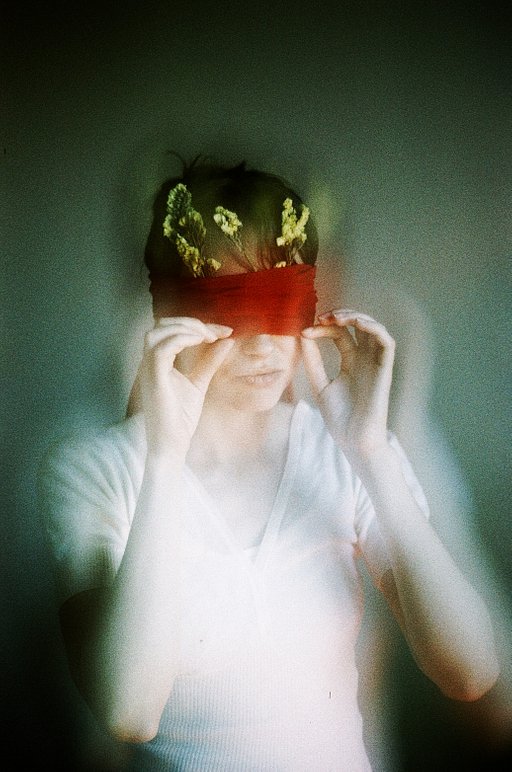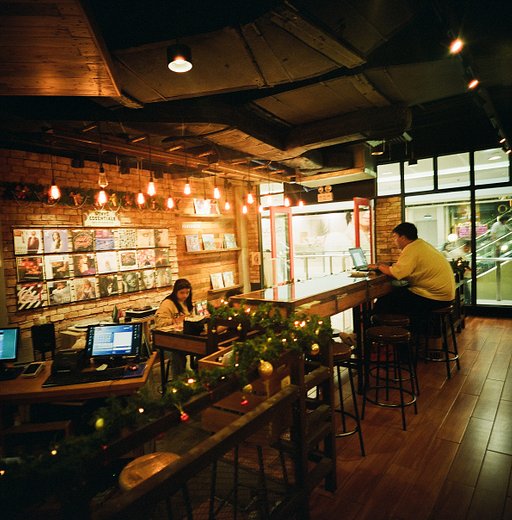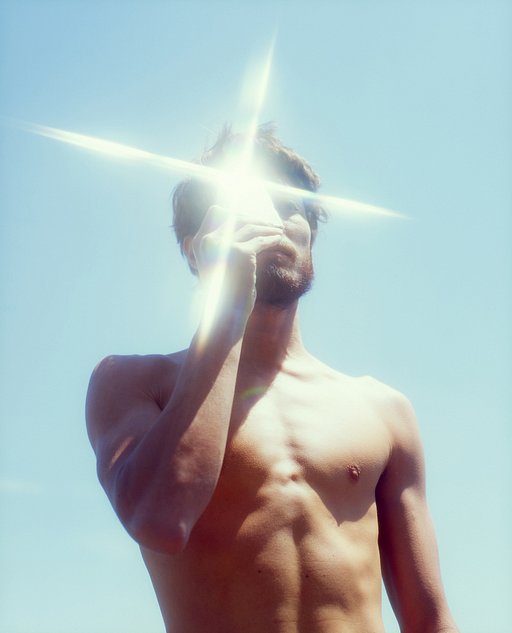An Interview With Malin Fabbri About Alternative Photography
7 Share TweetWe recently had the opportunity to chat with founder and editor of AlternativePhotography.com, Malin Fabbri, and we are pleased to now share it with you! Our goal was to better understand the inner workings of the Alternative Photography community and its formation, as well as get a sneak peek into the life of its founder. Malin was generous in sharing her knowledge, wisdom and history and we are grateful for it, as we’re certain you will be also!

Please tell us a little bit about who you are and what you do.
My name is Malin Fabbri — for those of you who wonder I am a woman — there has been some debate about my gender on the internet, but Malin is a very common female name in Sweden where I am from.
I moved to London in my early twenties to study Design, English and Photography. I continued working there in London as a designer for video production companies, design studios and big media names like Time magazine and CNBC Europe.
When I was doing my M.A. in Design studies at Central St. Martin’s School of Design, London, I discovered alternative photography, and wrote my thesis on the subject. The research involved a lot of work with photography and cyanotypes.
When I started my research, I found several books explaining the chemical process, but it was hard to get hold of written material on the perception and the ART of cyanotypes. Sitting in the London Printing Library and leafing through a book on Anna Atkins’ cyanotypes fascinated me, and ignited my interest in this blue-toned artwork. Soon I began making contacts with artists working with historical photographic processes today. Everyone I contacted was very enthusiastic, and it was their enthusiasm that kept me going for the two years I worked on my thesis. Thank you!
Finishing my degree and publishing my thesis felt more like a beginning than an end and I decided to combine my academic and practical experience and create a website – in the beginning it was called Cyanotypes.com – that was in 1999. A number of the artists that had helped me from the beginning were interested in publishing their photographs on the site, and it has now grown to include all alternative photographic processes in use by artists today. And it changed its name.
AlternativePhotography.com now represents over 400 artists and continues to grow. The website still maintains its origins as a source of information and research for alternative photographic processes and alternative techniques.
I still actively manage the expansion of the site as editor.
I make my own alternative process prints, pinhole photographs and run workshops. I am the co-author of Blueprint to cyanotypes - Exploring a historical alternative photographic process, and From pinhole to print – inspiration, instructions and insights in less than an hour, the editor of Alternative Photography: Art and Artists, Edition I and the author of Anthotypes - Make photographs using plants. I now live and work in Stockholm and have two sons, Maximillian and Ruben. If you are wondering about the origins of my surname — the father of my children, and my ex-husband, are of Italian heritage. There has been some debate about this on the internet as well.
What alternative photographic processes in particular interest you? Could you please give us some information about these and why they interest/excite you in particular?
They say that your first love is always special, and my first love was cyanotypes which I came across – and thus my first alternative photographic process print – in 1999. I was intrigued by the blue images and the hand coated quality and wanted to test the cyanotype process to see what it had to offer. I bought chemicals and spent an evening coating paper and cloth. The results of the next day’s printing surprised me.
Although the alchemy of the darkroom had always captivated me, developing a print in the sun was like a liberation. One of the things I found most refreshing about the process was the unpredictability of the results. Some of my best prints were the product of ‘happy accidents’. Sometimes things occurred without intention and ultimately resulted in a better print. I love that.
If someone is just starting to learn about these types of alternative processes, is there a particular one you would recommend for beginners to try?
Make it easy for yourself. Get the hang of hand coating and hand processing and see if you like it. If you do – and I hope you will – then move on to a more complicated process. Start with the least toxic processes too. There is no need to complicate things by needing a ventilation hub and a full protection suit. I recommend three processes that are fun to start with: The cyanotype, the anthotype and if you are into building cameras; make a pinhole camera.
Cyanotype
The cyanotype is often the first alternative process that people try. It’s relatively easy and safe enough to nurture a child’s interest in photography. It can be seen as a gateway to the further exploration of historic photographic methods. In addition, it gives experienced photographers and artists a great excuse to take their eyes off of the computer screen and get their hands dirty.
The developing process is straightforward. The chemicals are cheap, and most of the other items used can be found around the house. Pre-coated paper is available, but one of the benefits of working with cyanotypes is the great flexibility of material and paper available to you. Cyanotypes print on anything made of natural fibre. Cotton, linen, silk, handmade paper, watercolor paper and rags are just a number of alternatives. Some artists even print on wood.
So, if you want to explore a fun alternative photographic process or seriously want to experiment with producing unique fine art, make a cyanotype.
Anthotype
Anthotype is a very delicate photographic process and an environmentally friendly way of making prints using nothing other than the photosensitive material of plants found in the garden, the flower market or in the wild. All you need to add is water, sunshine, inspiration and patience – a lot of patience!
The process is very basic and simple. Utilizing nature’s own coloring pigments from flower petals, berries, plants, vegetables or even spices, images are produced using the action of light. The natural pigment is used to create a photographic image. The plants are crushed and mixed with alcohol or water to make a light sensitive emulsion. Ordinary watercolor paper is coated with the emulsion and an image can be created by exposing the paper under the sun for a few days or weeks – as I said, a LOT of patience is needed. The plant juice undergoes a chemical or physical change when it is exposed to light, changing its color. Some fade and some darken.
Pinholing
At first glance, pinhole cameras may seem too simple to offer versatility to an experienced photographer. However, the limitations of using a simple pinhole camera often help a photographer to free themselves from the technical settings on the camera. Creativity often lends a hand when things aren’t perfect and I need some help solving problems. I believe that limitation releases creativity.
A simple pinhole camera takes less than an hour to build. If you are new to pinholing and want to try your hands on this wonderful photographic process, check out From pinhole to print – inspiration, instructions and insights in less than an hour by Gary Fabbri, Malin Fabbri and Peter Wiklund. The book is designed to guide beginners to build a simple camera and develop a print. The photographer’s gallery chapter shows some advanced features and effects which truly inspire.
What are your views on the current status of interest in alternative photographic processes?
My days are stressful. I’m in a rush to get to work, I am busy at work and then rush to school to pick up the kids. Dinner with two small boys can be hectic and early evenings are filled until they’re in bed.
I turn on my computer in the evening to a stack of emails, deal with a constant stream of paper work and start editorial work on the website, AlternativePhotography.com. Galleries need updating, articles need to be added, the newsletter needs writing, and books need to be posted. There’s not much time left for quiet and reflection.
When I turn to alternative photographic processes it is like tranquility and escaping from the digital world and the stress. It is a contrast doing something with your hands and creating a piece of artwork. I think a lot of people think like me, alternative photographic process is a step back from the clean pixels on the screen and a relaxing time getting your hands dirty.
How is it to run a website and community dedicated to this type of photography?
One thing that I like about the alternative photography community is the amount of enthusiasm and willingness to share knowledge that you find there. As editor for AlternativePhotography.com, I’m always excited to receive developments and refinements of techniques, articles, news and new images. Not to mention the galleries containing the work of over 400 artists. I often go there myself to browse for inspiration.
I never think of it as “my” website or “me” running the website. It really is a true open source sharing community that contributes to making the information available and accessible – giving to others to learn. I only have one word for it: inspiring.
Thanks again to Malin Fabbri for sharing her life and work with us! Head on over to AlternativePhotography.com and spend some time looking around and utilizing all of the incredible resources there.
written by jacobs on 2014-11-14 #lifestyle #cyanotype #pinhole-camera #alternative-photography #anthotype #malin-fabbri #pinholing



























No Comments